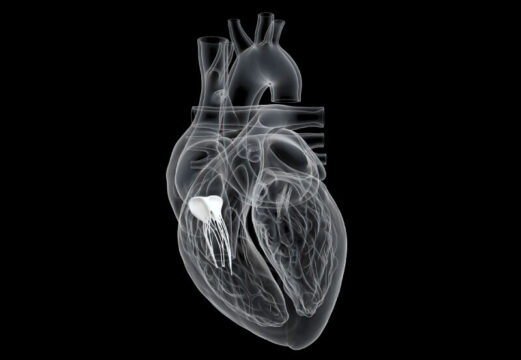Untreated tricuspid regurgitation (TR) has been associated to high morbimortality. Surgical treatment of isolated severe TR is complex and carries a high mortality rate.

A transcatheter treatment of this valve is currently being developed, and different concepts are being applied to the new devices.
Even though most TR is secondary, atrial functional tricuspid regurgitation (A-FTR) has recently been described; it happens as a result of right atrial and tricuspid annulus dilation. The evolution of this new entity vs transcatheter treatment for non-atrial functional tricuspid regurgitation (NA-FTR), remains unclear.
165 patients with severe symptomatic TR were analyzed, 62 (37.6%) presented A-FTR.
The Cardioband device was used to perform transcatheter annuloplasty.
Mean patient age was 79, and they were mostly women. There were no differences in diabetes, coronary artery disease, pulmonary hypertension, MI, cardiac surgery, pacemaker implantation, COPD and kidney function deterioration. NA-FTR patients presented more hypertension, atrial fibrillation, elevated bilirubin, BNP and higher surgical scores (TRI-SCORE and EUROSCORE). Ventricular function was lower in patients with NA-FTR (46% vs 57%, p<0.001).
Read also: Biolimus vs Paclitaxel Coated Balloons for the Treatment of In-Stent Restenosis.
The most frequent TR in A-FTR was severe, while NA-FTR patients saw more torrential TR.
Procedural success was higher among A-FTR patients (75.8% vs 55.3%, p<0.001).
After a 12 month followup, mortality resulted lower among A-FTR patients (6.5% vs. 23.8%, p=0.011), with no differences in rehospitalization for cardiac failure. TR reduction was maintained in both groups, improving functional class. A-FTR patients saw more ≤2 TR reduction.
Read also: 2 Year Outcomes of Transcatheter Mitral Valve Replacement with Intrepid.
A-FTR phenotype was a strong predictor of ≤2 TR reduction at 30 days.
NA-FTR showed more right ventricular remodeling.
Conclusion
Transcatheter tricuspid annuloplasty reduces tricuspid regurgitation in both phenotypes. A-FTR is a strong predictor of tricuspid regurgitation ≤2. NA-FTR showed more right ventricular remodeling. Both phenotypes showed similar clinical improvement, which emphasizes the benefit of transcatheter annuloplasty, even in advanced cases.

Dr. Carlos Fava.
Member of the Editorial Board of SOLACI.org.
Original Title: Performance of Transcatheter Direct Annuloplasty in Patients With Atrial and Nonatrial Functional Tricuspid Regurgitation.
Reference: Jennifer von Stein, et al. J Am Coll Cardiol Intv 2024;17:1470–1481.
Subscribe to our weekly newsletter
Get the latest scientific articles on interventional cardiology





